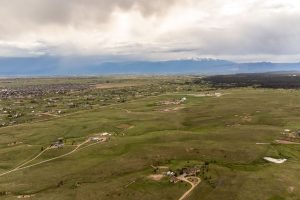By Terry Stokka
Many of us have a wood stove that has devoured numerous cords of wood and given us warmth and ambiance. We haven’t thought much about the process because it seems simple, cheap and reliable. The thought of purchasing a new stove doesn’t cross our mind because “old faithful” is working well.
That was my thought until a chimney cleaner told me I had corrosion and major creosote problems in my chimney flue that would require costly work to fix. I consulted with a knowledgeable friend who suggested I invest in a new technology stove. After he educated me on new stoves, I was convinced. He helped me install a new stove and flue; and, after 27 years of use, I am convinced that more people should invest in a new stove for safety, economy, efficiency and the environment.
My old wood stove had a well-known name and was about 18 years old. It was basically a steel box with two doors on the front, an adjustable air vent on the bottom of each door and an 8-inch hole in the back for the stovepipe connection to the chimney. When I opened the doors with a fire burning, I would see the flames licking into the hole going out the back. It seemed to produce good heat, but I didn’t have anything to compare it to.
The chimney cleaner told me Stage 1 creosote is powdery black soot that is ash from a fire. It is not flammable and can be easily removed. Stage 2 creosote is crunchy and has a small fire danger. Stage 3 creosote is shiny and hard and looks like black glass on the side of the chimney. Stage 3 is hard to remove and can catch fire in the chimney and burn like a jet engine, reaching temperatures of 2,000 degrees or more that can crack the chimney and spread to the house. Stage 2 and 3 creosote come from incomplete combustion of the wood in the stove.
Half of the heat from burning wood comes from the burning wood and the other half from burning the gases given off as the wood burns. In an old-style wood stove, the air vents are at the bottom of the firebox. The air comes in the bottom to feed the fire on the floor of the stove. As the wood burns, it gives off smoke and gasses that do not burn but go up the chimney. In the chimney, they cool and condense on the chimney walls as Stage 2 and 3 creosote, just waiting for a very high temperature from a hot fire to start a chimney fire.
My new stove is also a steel box with a door on the front. It has a sliding rod that adjusts the amount of outside air that gets into the bottom of the firebox. The stove has a 6-inch stainless steel flue (stovepipe) with an insulating substance around it inside the chimney to keep the flue hot and prevent creosote from condensing inside the pipe.
In addition to the sliding rod air vent, my new stove also has three tubes on the inside top of the firebox with many small holes. These tubes are connected to an outside air source so the gases coming off the wood can mix with fresh air to burn and provide more heat. When my stove is burning, I see those air tubes (called secondary air as opposed to primary air coming in the bottom of the stove) looking like little blowtorches as the fresh air mixes with the hot gases and burns in the top of the stove. That means I am burning the second half of the flammable part of the wood and getting the full heat value out of my wood. All that goes up the chimney is ash as Stage 1 creosote that is not flammable and easily cleaned. Each year, I run a chimney brush through my flue a few times and get a bag of powdery soot that easily comes off the side of the flue right down to the stainless steel finish. Here is an interesting fact: For many woods like pine and hickory, a fire that is smoking and burning inefficiently will smell good because you can smell the unburned gases from the incomplete combustion. However, an efficient fire will not have much fragrant smoke but will be sort of bitter and stinky because the fragrant gases have been burned off.
So new stove technology heats more efficiently, uses less wood, produces less pollution and is safer from chimney fires. Take a look at your old wood stove. Is it time for a change?




